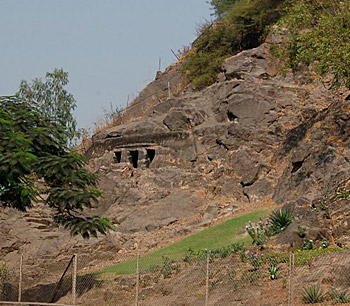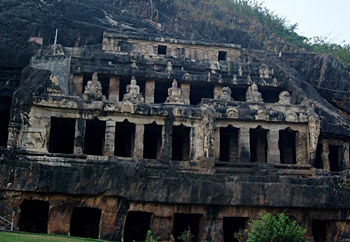 Vijayawada was an ancient town of the Chalukya kingdom. It was earlier known as `Bejjawada`, as here numerous channels and the river makes to the sea. The current name of the `Vijayawada` town is derived from the name of `Arjun`, the legendary character of Mahabharata.
Vijayawada was an ancient town of the Chalukya kingdom. It was earlier known as `Bejjawada`, as here numerous channels and the river makes to the sea. The current name of the `Vijayawada` town is derived from the name of `Arjun`, the legendary character of Mahabharata.
Vijayawada was originally a significant Buddhist place in the 7th century AD. It was the major centre of the Eastern Chalukyas, who created large cave temples within the rocky hills. The Andhra culture and language developed a lot in Vijayawada. The Hindu temples, which include the ancient rock cave temples, the two 1000-year-old Jain temples and the Buddhist site at Amaravathi are the attractions of present day Vijayawada. Earlier Vijayawada was the capital of the Vishnukundin kingdom (420-620 A.D).
In Vijayawada, there is a rock cut cave with two compartments named after Akkanna and Madanna, the famous ministers of the Qutb Shahi kings of the 17th century. This rock cave can be found on the way to the Kanaka Durga temple, which is situated on Indrakila Hills. This temple is dedicated to the goddess and protector of the city.
It is believed that the area was once under the domination of powerful demons that no man could fight against them. Then, the goddess Durga defeated them and thus the people of the region became permanently safe. Afterwards, to show their continual gratitude and honour for the goddess they built this temple and continued worshipping her. The goddess Durga in this temple of Vijayawada was regarded to symbolise prosperity, power and compassion. Most of the devotees give the credit of prosperous development of Vijayawada to this goddess.
 There are few other caves, which are found in Vijayawada and these are-
There are few other caves, which are found in Vijayawada and these are-
Mogalarajapuram Caves
The Mogalarajapuram Caves are located 3 km east of Vijayawada. These are cave temples, which are dedicated to the deities such as Nataraja and Vinayaka. These caves can be traced back to the 5th century AD.
Undavalli Caves
The Undavalli Caves are situated almost 8 km away from Vijayawada. These ancient Hindu cave temples of Undavalli are situated across the river. It is said that the rocks on which the caves were formed were shaped in an Antarctic - Indian collision about 16 million years ago. These caves were carved in the 7th century AD. These cave temples were dedicated to Anantasayana (another name for Vishnu) and the Trimurthi (the triad-Brahma, Vishnu and Siva). These temples have incomplete top section.
The first floor of these cave temples has the tiny, finely crafted statues of deities. It is known from the inscriptions of 1343 A.D. that an official of the area named Machamareddi made several donations. A large statue of Lord Vishnu can be found deep within the right side of the caves. It is supposed to be the work of Andhra sculptors who built it by the order of Madhava Varma, the first king of the Vishnukundin dynasty, during 420-425 A.D.
The Undavalli caves were planned for the Buddhist monks. It is prevalent from its elevation and rock cut work in four stories. But, it was later adapted to a Hindu temple being impressed by the artistic propriety and excellence of craftsmanship found on the pillars and walls of the caves.





















